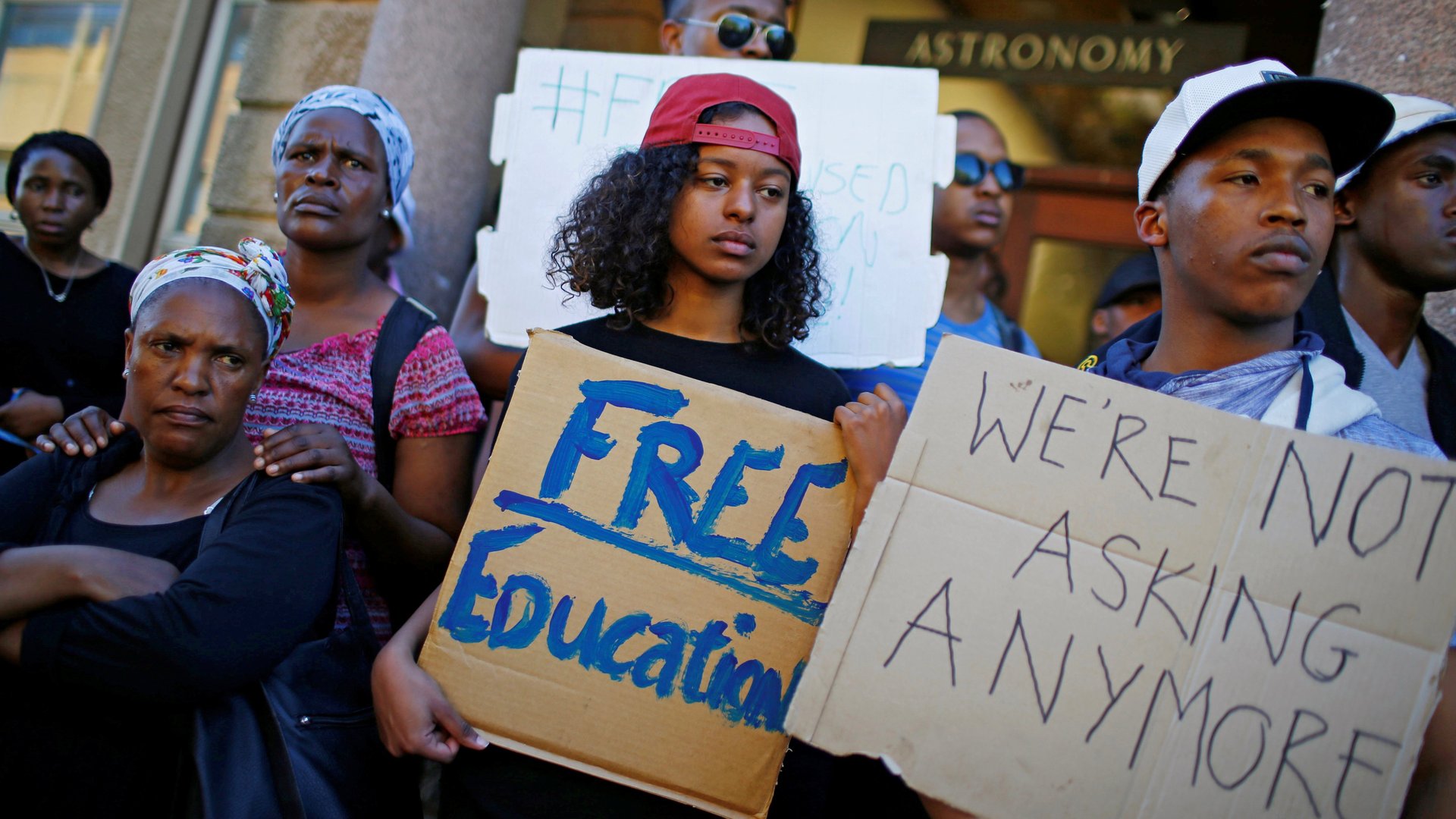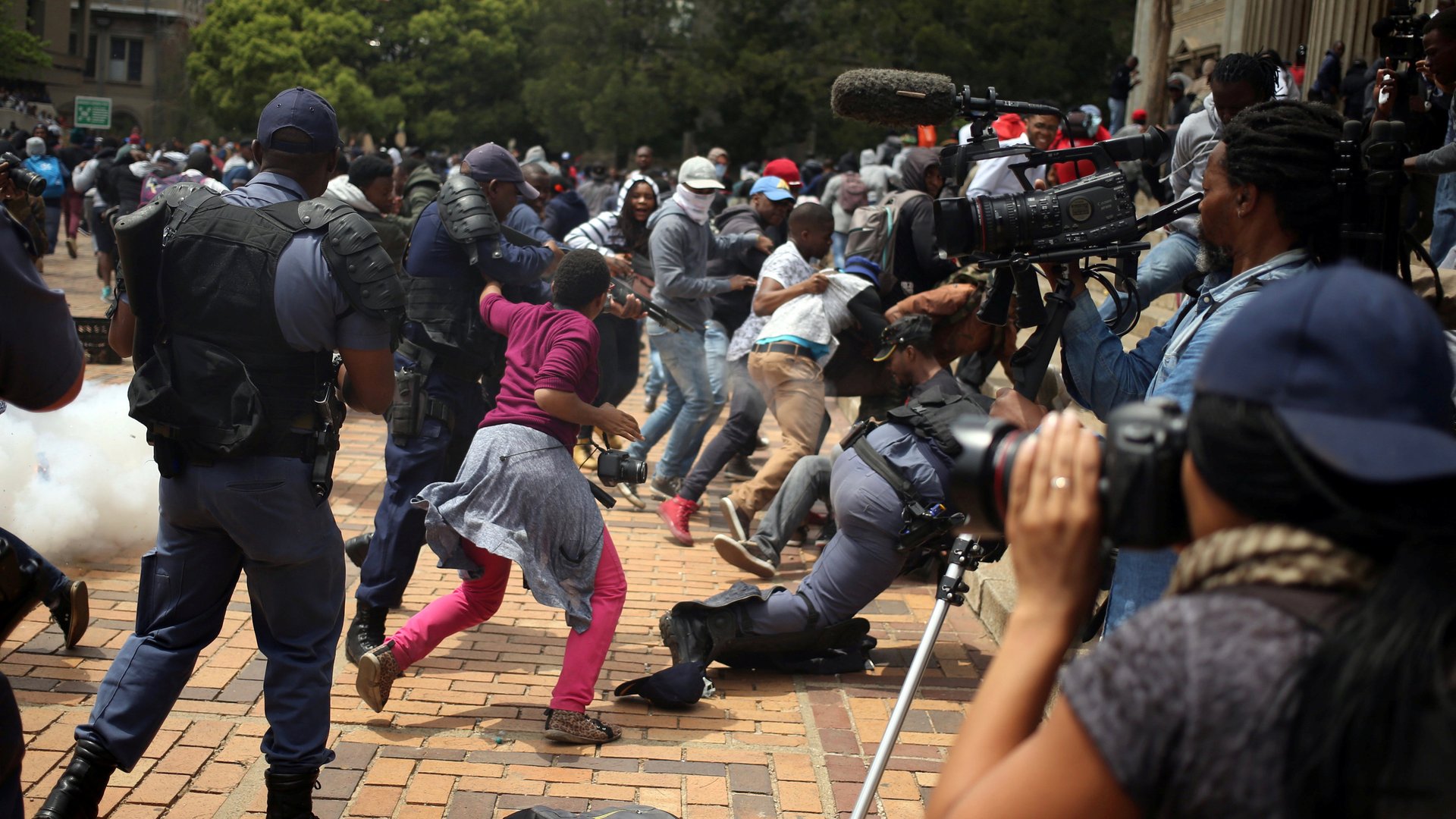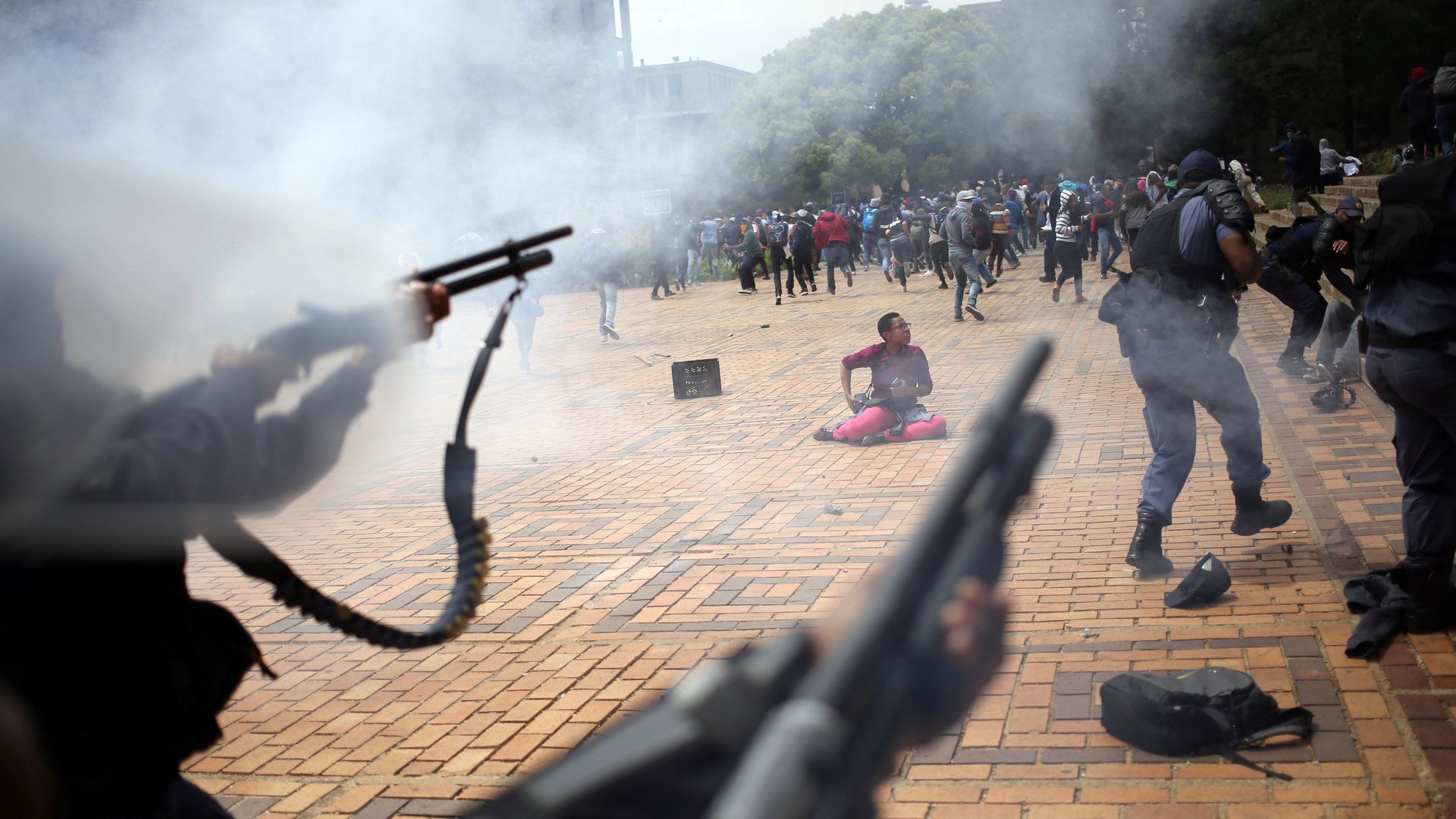Protests on South Africa’s university campuses aren’t going away anytime soon, nor should they
South Africa’s university campuses are in chaos as the Fees Must Fall movement for free education gathers momentum.


South Africa’s university campuses are in chaos as the Fees Must Fall movement for free education gathers momentum.
Several times over the last few weeks, riot police faced off against students singing liberation anthems while lecture halls, science labs and lawns reserved for graduation ceremonies have become the site of running battles, with teargas and stones exchanged in battle. Classes have been suspended for fear of students’ and lecturers’ safety. The students at the fore of these protests have vowed that no classes will continue until their rallying cry for free schooling becomes reality.
The most visible protest have taken place on South Africa’s formerly white-only campuses, led by the University of Cape Town and Johannesburg’s University of the Witwatersrand (known as Wits University).
Critics argue these protests are the actions of a privileged few since these once-segregated public schools remain the country’s best universities, and the most expensive. Most of South Africa’s 27 universities are in a dire condition, according to rights group Equal Education, but protests on these less prestigious campuses do not garner the same public attention.

This year’s protests have been more fraught as the gulf between student leaders, universities and the government become ever wider. The torching of a library and decades-old texts at the University of KwaZulu-Natal eroded public support but also raised the uncomfortable question on the value placed on libraries versus poor students’ access to those libraries. The increased presence of police and private security on campuses has only heightened tension. The student movements have not been without blame, and have been accused of coercion and intimidation, but they have also garnered the support of political heavyweights including Winnie Mandela.
The violence will not stop until tuition fees are scrapped, say the students gathering under the #FeesMustFall banner. Their cause is guided by South Africa’s constitution, which states “everyone has the right to further education, which the state, through reasonable measures, must make progressively available and accessible.” But as with many rights like water and housing, South Africa does not seem to have the political will or the financial resources to implement its ideological values.

Passing the buck
Last year, the #FeesMustFall movement ensured there were no fee increases for 2016. This year’s protests were sparked by an announcement from higher education minister Blade Nzimande that universities should determine their own fee increases for 2017, but capped the amount at 8%, citing a tightening state budget and inflation, but essentially passing the buck back to individual universities.
Nzimande added that the government will cover the tuition increases for students on National Student Financial Aid Scheme. And those who formed part of the “missing middle class”—students whose parents earned more than the national funding scheme’s threshold—would also be exempt from free increases. Student leaders began to meet immediately after the televised announcement on Sept. 19, rejecting the government’s strategy.
To provide free higher education would require financial restructuring that South Africa’s ailing budget cannot handle, according to treasury. Finance Minister Pravin Gordhan allocated 28 billion rand (just over $2 billion) for university subsidies and 14.3 billion rand (just over $1 billion) to the national funding scheme for the 2016/2017 financial year.
South Africa’s blueprint for national success, known as the National Development Plan, needs 1.6 million graduates by 2030. That would require at least 2% of the GDP, according to PWC South Africa and other analysts. South Africa spends less than 0.8% of its GDP on higher education. Gordhan has agreed to meet with protesting students in the coming days, but says South Africa’s 0.4% GDP growth rate meant the budget is already constrained.
But a leaked 2012 report outlining a model for free university for the country’s poorest students (those from homes with an income in the lowest tax bracket of 188,000 rand or $13,160) showed that free education is possible in South Africa. The report, commissioned by the higher education ministry, was only released after an activist group filed a freedom of information request, known in South Africa as Promotion of Access to Information Act application.
“Free university education for the poor in South Africa is feasible, but will require significant additional funding of both [the National Student Financial Aid Scheme] NSFAS and the university system,” the report concluded.
It outlined the need to completely restructure the National Student Financial Aid Scheme, broadening the definition of poverty so as to benefit a greater number of students and placing more of the burden on state funding rather than relying on poor students (many of whom drop out due to a lack of financial and academic support) to pay back their loans in the event they find a job. The report also recommended greater support for students, including consideration for learning materials. The detailed recommendations place the burden on the state to fix South Africa’s education crisis.
“The question that South Africans need to be asking is: What kind of a society are we trying to create?” the report reads. “And the answer to that question is unequivocal: A society that is socially just.”